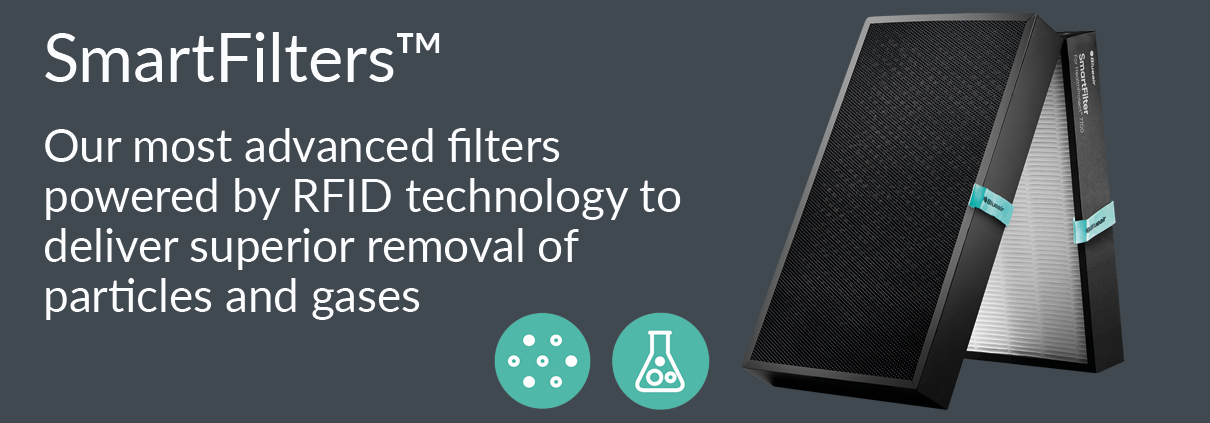What is PM2.5 And Why is it a Risk to Hospital Patients?
Air pollution and quality is a key concern for everyone, particularly in hospitals and healthcare settings where people can spend long periods of time or be clinically vulnerable.
What is PM2.5?
PM2.5 is a hazardous air pollutant. It is composed of particulate matter (PM) that has an aerodynamic diameter of 2.5 micrometres or smaller.
Where Does PM2.5 Come From?
There are many possible sources of PM2.5. Natural particles such as pollen and sea spray are both examples of potentially hazardous particulate matter. But human activity can create the most harmful forms of particulate matter. Wood burning, industrial and agricultural processes, manufacturing, and road traffic can increase the concentration of PM2.5 in the atmosphere.
The Health Risks of PM2.5
As these particles are so small, PM2.5 is invisible to the naked eye. But when inhaled, PM2.5 particles are small enough to pass through the lungs and enter your bloodstream. And once these particles are in your bloodstream, they may make their way to your heart, brain, and other organs.
Long-Term Exposure to PM2.5
This is why prolonged exposure to PM2.5 can result in serious illness. It is particularly hazardous for children, elderly people, and people with allergies and respiratory problems. Inhaling particulate matter can make existing conditions worse. But in the long-term, exposure can lead to the development of serious lung conditions.
Toxic Air at the Door of the NHS
The World Health Organisation (WHO) advises a maximum concentration of PM2.5 of 10μg/m3 for the annual average.
A recent report by Asthma + Lung UK found that more than 2,000 UK health centres are located in areas where PM2.5 levels are in excess of the WHO’s limit.
The report, Toxic Air at the Door of the NHS, found that 2,220 GP practices and 248 hospitals are located in areas where the concentration of PM2.5 is above 10μg/m3 for the annual average. This accounts for 1 in 3 GP surgeries and 1 in 4 hospitals in England.
If you’d like to know if your health centre is in an affected area, check our guide to the best and worst places in the UK for air pollution.
Why is PM2.5 a Risk to Hospital Patients?
PM2.5 poses a health risk for anyone. But it’s particularly hazardous for hospital patients, as many of them will already be in a vulnerable state. Air pollution can make existing conditions worse. It could even cause patients to develop additional, and potentially more serious, conditions than those for which they are undergoing treatment. (Do you have a source for to underpin this fact? If so, please reference this in the copy. If not, please just remove the sentence for now).
According to one study, over 20,200 respiratory and cardiovascular hospital admissions each year can be linked to air pollution.
And PM2.5 is not just a risk for hospital patients. It is also a risk for hospital staff. As they will be spending more time onsite than anyone, they could potentially get exposed to much higher levels of PM2.5. Over time, they may develop serious health conditions as a result.
How to Reduce PM2.5 Concentrations at Your Hospital
The current UK legal limits for PM2.5 concentration is almost double the WHO’s recommended limits. In the long-term, new legislation could help the whole country address this air pollution problem. But there are a number of initiatives that can help you make a significant difference in the short-term too:
- Set lower speed limits around your hospital, and limit the amount of traffic that is allowed onsite at any one time. Read our full guide to how speed limits can make a difference to air pollution.
- Monitor the air quality in areas of your hospital where the most vulnerable patients spend time, such as children, elderly patients, and patients with heart and lung conditions. Read more about how air quality monitoring can help you fight air pollution in your healthcare setting.
- Invest in an advanced air filtration system. Read our full guide to the sort of air filtration systems that can make a difference to air pollution in healthcare settings.
Advanced Air Filtration for Hospitals and Other Healthcare Settings
Our Blueair HealthProtectTM air purifiers are fitted with advanced HEPASilent technology. This is capable of catching 99.97% of particles down to 0.1 microns, including PM2.5 fine air particles, as well as VOCs, dust, mould, and up to 99% of viruses and bacteria.
Take a look at our complete range of specialist air purification systems for hospitals.



